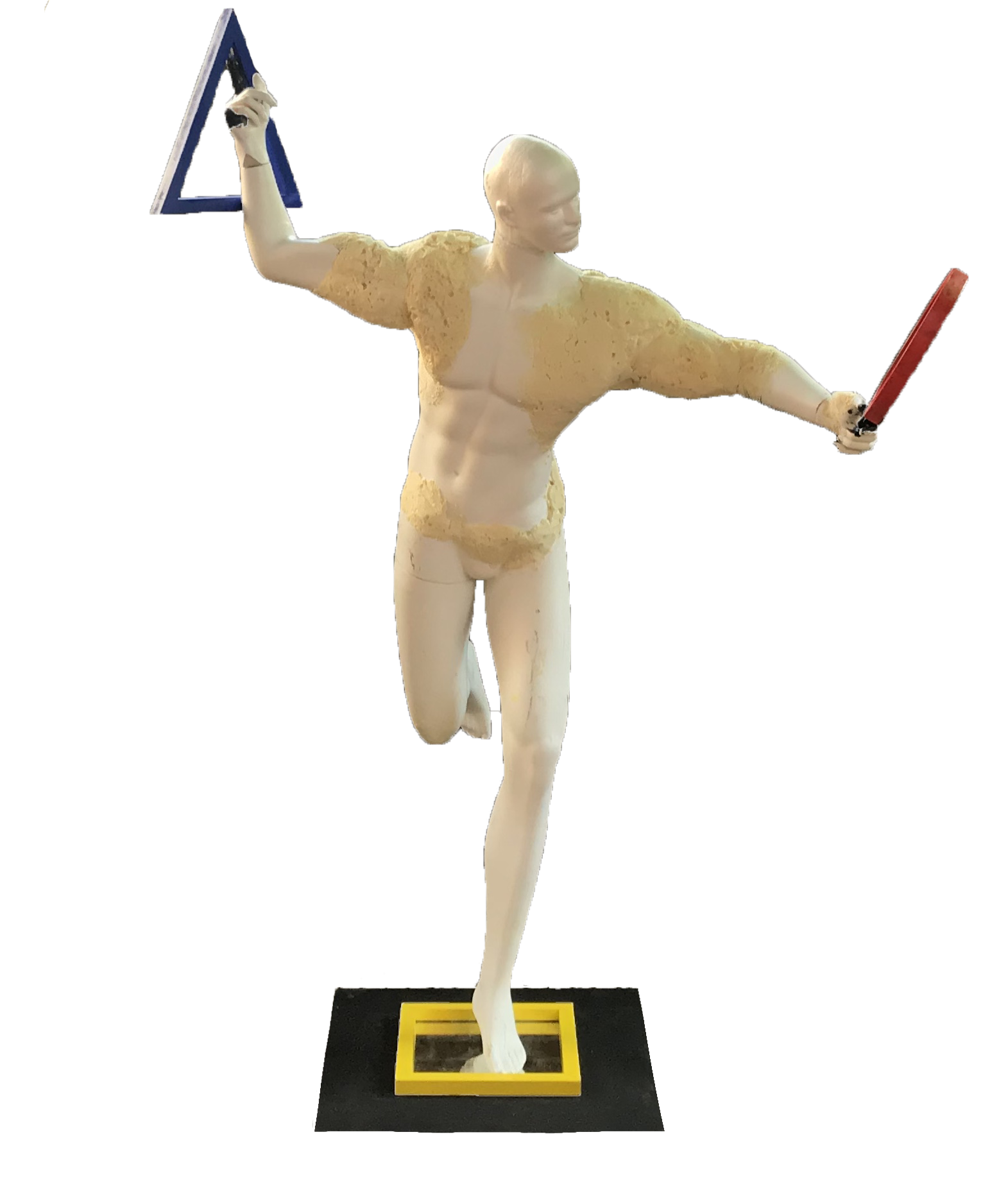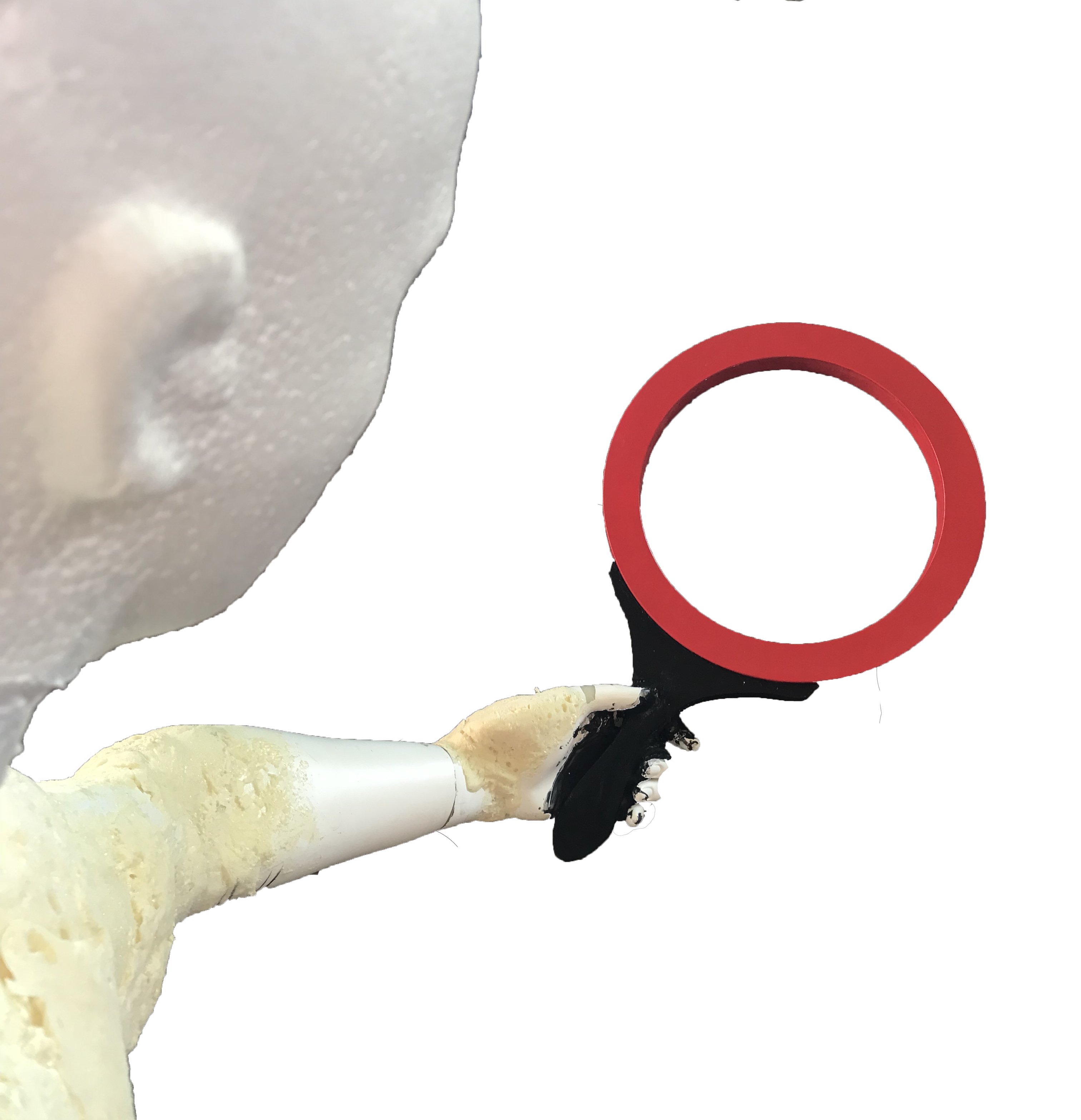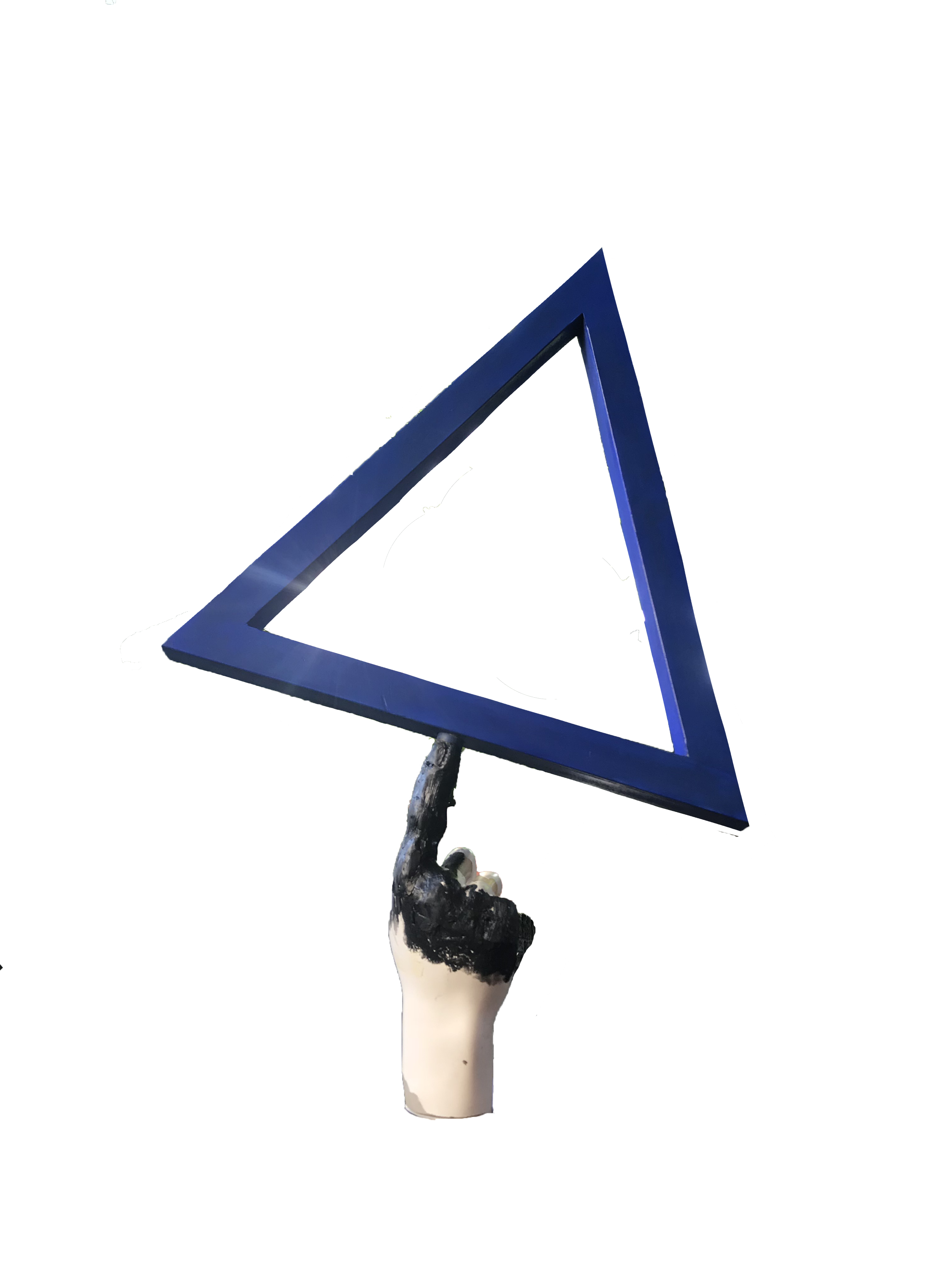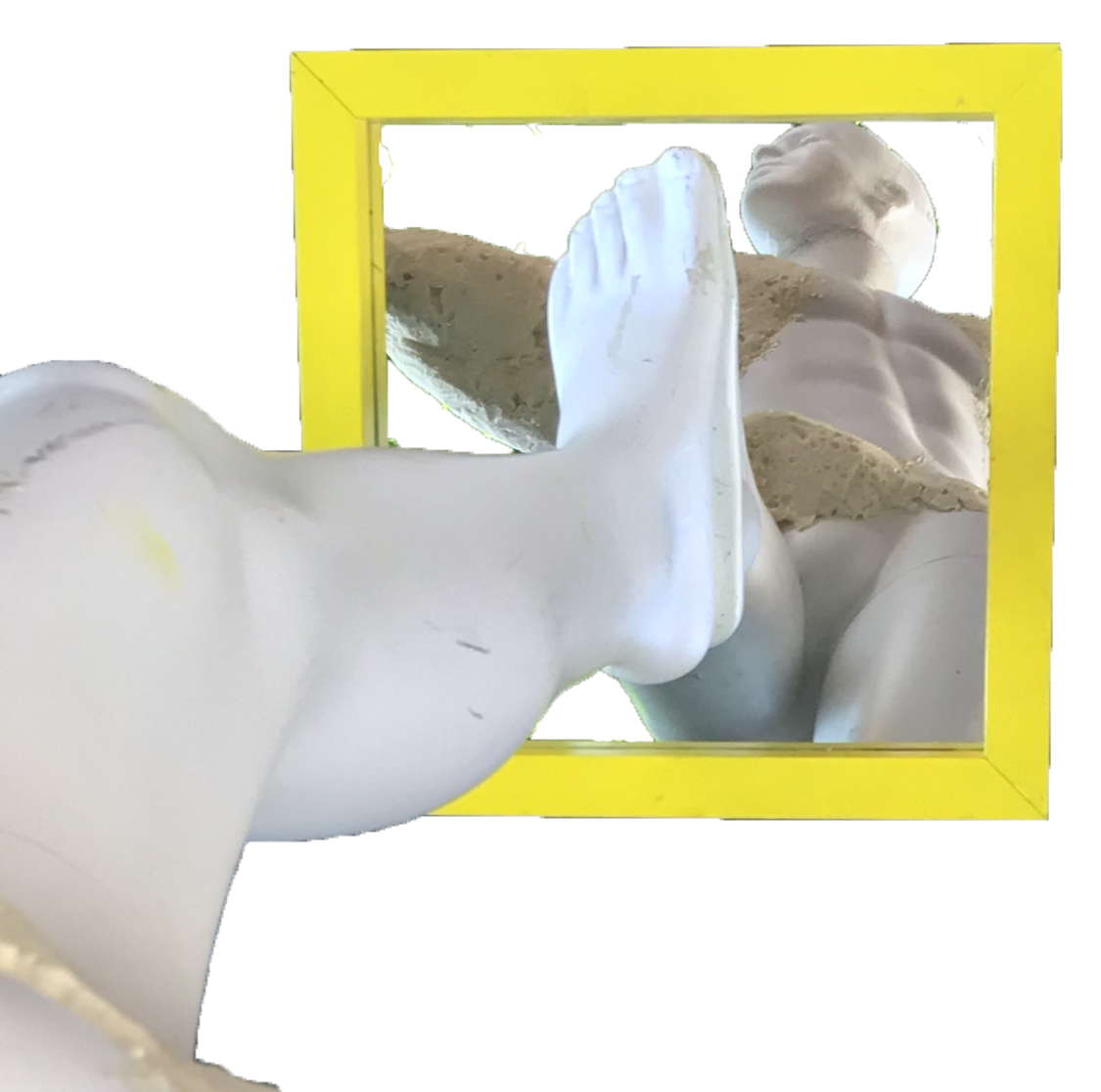




The yellow square is a representation of how we reflect upon the evident world around us with our actions; our interaction with the world is a mere equation of this relation between human and world.
The light that goes into the mirror equals the light that goes out.
So when the world around us turns, we will turn in similar fashion.
A conclusion of this can be, that whatever we do (so also our thinking, and reflecting), it is all already our nature.
The nature around becomes our nature. The human aspiration to
transcend the evident world, comes from the evident world itself.
And this evident world, in pure objectivity we can’t even perceive - as all we perceive is just a reflection of our own will.
This is what the red circle shows; instead of a mirror showing the man his face, it shows him the world how he sees it (subjective).
And to divert from subjectivity - if we aim (like Bauhaus in it’s early days) to illustrate nature as objective as possible, as real and true as
possible - abstraction is what we end up with.
Now this abstraction is the most ‘valid’ representation of the evident world around us.
With this conclusion, our ‘reflecting’, we strive to lift up the world to ‘the divine’.
(For example, think of the references to gothic churches in Gropius’
earlier Bauhaus works, where all the high shapes and angles direct you to look up, towards god. The evident forms instruct you to reach a
transcending ‘conclusion’.)
This is what the blue triangle shows us.
And to wrap up this text, we should refer back to the beginning of it.
All our tendencies to ‘elevate’ ourselves, to reach a transcendence, have formed by influence from the world around; the evident and the transcending are equals, and we (with our natural drive to reflect and act) ARE the equation!





